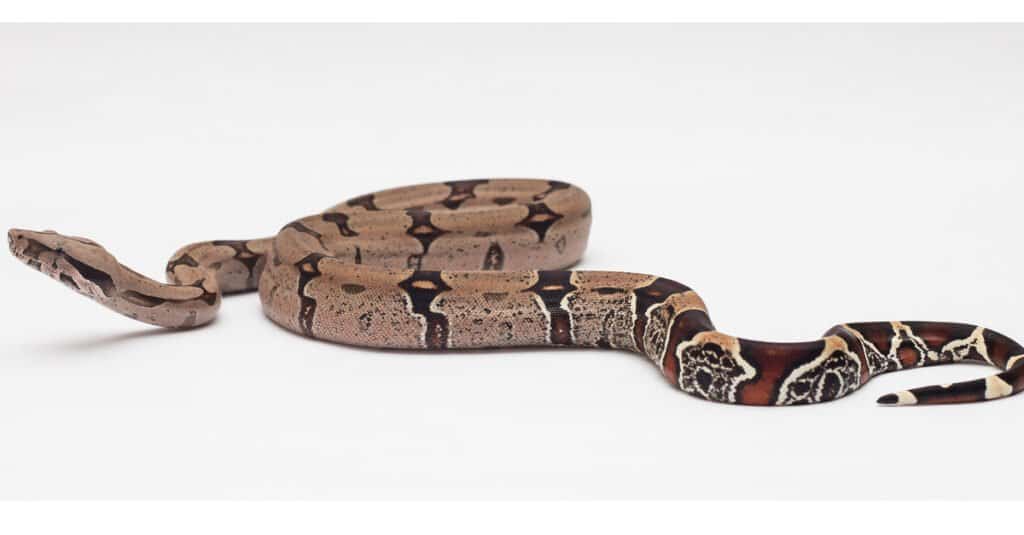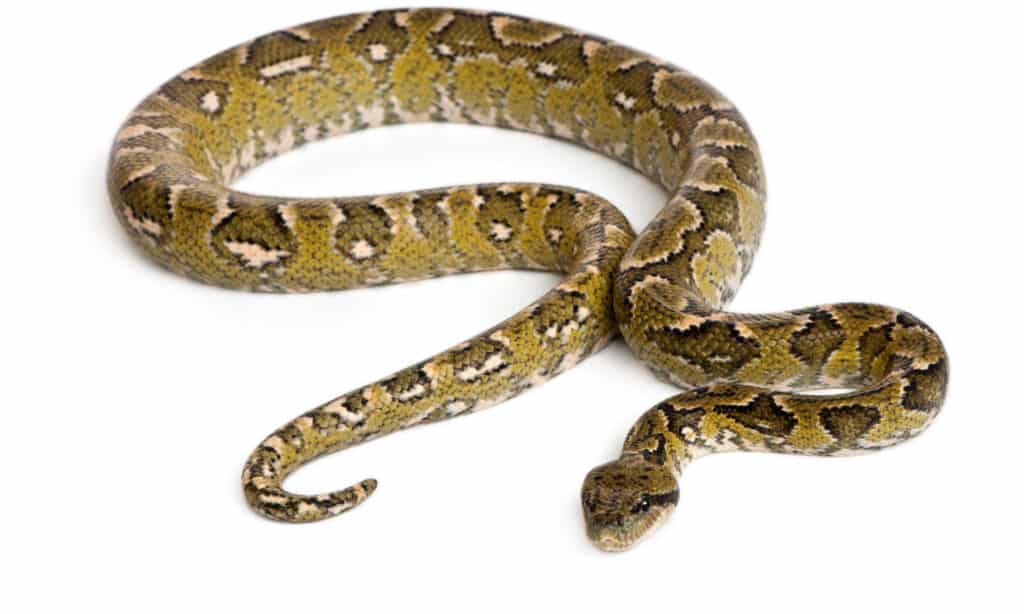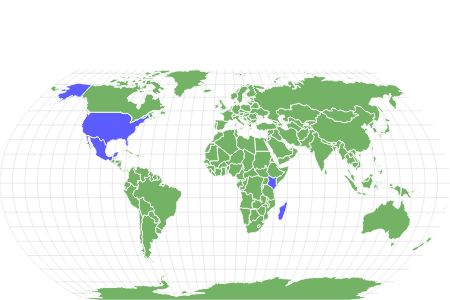Boas
Various
Boas are considered primitive snakes and still have vestigial legs, called spurs.
Advertisement
Boas Scientific Classification
- Kingdom
- Animalia
- Phylum
- Chordata
- Class
- Reptilia
- Order
- Squamata
- Family
- Boidae
- Genus
- Various
- Scientific Name
- Various
Read our Complete Guide to Classification of Animals.
Boas Conservation Status
Boas Facts
- Prey
- Various mammals, birds, fish, lizards, sometimes other snakes.
- Name Of Young
- Neonate
- Group Behavior
- Solitary except during mating season
- Fun Fact
- Boas are considered primitive snakes and still have vestigial legs, called spurs.
- Lifestyle
- Nocturnal
- Diurnal
- Nocturnal/Crepuscular
- Number Of Species
- 49
Boa constrictors are large, heavy-bodied snakes that squeeze their prey to death before swallowing it whole.
It’s true! There are about 49 species of boa spread across 12 genera. Most boas look like “boas,” with the classic boa-shaped head and thick, muscular body. However, some are much smaller and thinner.
Incredible Boa Facts
- Unlike pythons, boas are ovoviviparous, meaning that they don’t lay their eggs. Instead, the eggs develop inside the mother until the babies are born.
- Some boas have heat-sensing pits between scales instead of on top of them.
- They’re considered primitive snakes, and boas have spurs that scientists believe are the leftover of the limbs they’ve evolved away from.
- They are non-venomous constrictors that squeeze their prey to death.
Boa Scientific Name
There’s only one species properly referred to as a boa constrictor, it’s commonly known as the red-tailed boa. It lives in South America, but many people keep them as pets. Everything else is a cousin, but part of the same family.
All boas are part of the Boidae family. So, a snake in the Boidae family would be considered a boid. The word boa stems from the Latin word boa, meaning “large snake.” Sometime around the 1600s, it began being applied to nonvenomous constrictor-type snakes from South America.
Within the Boidae family, some scientists recognize five subfamilies –
- Boinae
- Candoiinae
- Calabriinae
- Erycinae
- Sanziniinae
Each subfamily has its own species, but most are in the Boinae subfamily. This is where scientists classify all the true boas. They range in size from the slender St. Vincent tree boa to the gargantuan anaconda.
Boa Appearance and Description
In general, boas are thick, muscular snakes with strong jaws and razor-sharp teeth that help hold their prey while they constrict it. Boas often have triangular-shaped heads and some have heat-sensing pits lining their top lip. Many species are nocturnal and have elliptical pupils with bright eyes.
The smallest boas are slender and short; some species only reach 2 feet long. They include some tree boas and sand boas. The biggest include the anaconda and red-tailed boa.
Most have smooth, glossy scales that, in some, are iridescent, shining with various shades of blue, green, and purple. These snakes come in a bewildering array of sizes, beautiful colors, and patterns that make some species popular as pets. However, not all do well with a lot of handling, so people consider them “display” snakes. They’re beautiful to observe, but handling them frequently isn’t healthy for the snake.

Red tail boas are named for the color of their red tail.
©Baraian Gheorghe Cristian/Shutterstock.com
Boa Behavior
Boas are a diverse group of snakes. They inhabit various types of habitats around the world, from arid deserts to humid rainforests. The habitat where they live determines at least some, if not much, of their behavior.
Some things are true for most boas:
- These snakes are mostly solitary and only come together during mating season.
- They constrict their prey by wrapping their coils around it and squeezing tightly to subdue it before swallowing. Scientists discovered that boas don’t always cause asphyxiation; instead, the squeezing pressure causes heart and respiratory failure.
Many boas that live in forested habitats spend a lot of time in the trees, resting, basking, or hunting. Even the giant anaconda spends some time in the trees as a juvenile. As an adult, its size and weight make an aquatic lifestyle much more attractive. One exception to this is Dumeril’s boa in Madagascar. It is almost exclusively terrestrial, living in and amongst human habitats in addition to its native dry forest.
Ground-dwelling boas sometimes climb (and indeed, most species are excellent climbers) but often live where there aren’t as many trees. Sand boas and rosy boas are fossorial and spend all their time on or under the ground.
Tree boas, as their name implies, spend either all or a majority of their time in the trees. Some live high up in the tops of the trees, and others live closer to the ground or even spend most of their lives in the water.
Most of them are ambush predators, spending their time waiting for prey animals to cross their paths. Others, however, actively seek out their prey. These species are found cruising through trees and on the ground looking for their next meal. Some tree boas have prehensile tails that they use to hang from branches and try to catch bats and birds as they fly by.

Madagascar tree boas become green as adults, but start out life bright red!
©Eric Isselee/Shutterstock.com
Boa Diet
Boas are true carnivores and eat only other animals. Each species has different preferences, however, they have a lot in common:
- Their prey animals are generally smaller than the individual snakes’ thickest body point.
- Many of them prefer warm-blooded prey such as birds, mice, rats, bats, rabbits, etc. Many of the juveniles prefer lizards and other small reptiles until they grow large enough to take warm-blooded prey.
- The bigger the snake, the bigger the prey it prefers. So, anacondas will take animals as large as peccaries and capybaras. The relatively small rosy boa can only handle small mammals like kangaroo rats.
Boa Reproduction and Life Cycle
Many species live in rainforests, which don’t necessarily have a “winter.” What they do have is a dry and wet season. During the wet season, which in many areas is monsoon season, boas that inhabit the area search for mates. Those species living in arid or semi-arid habitats mate during spring.
Many females only mate every other year, because carrying babies takes a lot of energy and they need to recover in between mating cycles. Males, however, can mate every year.
Males often compete for mating privileges with a local female. When two males encounter each other they wrestle, with the stronger one winning. In anacondas, however, males often form a mating ball around a female, all trying to get close enough to mate with her.
Boas don’t lay eggs; they give birth. The mother carries the eggs for 4-7 months (depending upon the species), during which some species change colors, becoming darker. This color change allows her to collect more heat, giving the babies (called neonates) a better chance of growing as big as they can before they’re born.
After they’re born, the babies and mother go their separate ways. Boas aren’t the most maternal, and the babies are on their own from birth.

The Emerald tree boa is also known as the green tree boa. They catch most of their prey while they hang from a branch to snatch them off the ground.
©Hannamariah/Shutterstock.com
Boa Predators and Threats
All animals have a natural predator or three at some point in their life cycle. These snakes are no different. Juvenile snakes are preyed upon by larger predators like lynx, bobcats, coyotes, hawks, eagles, jaguars, and ocelots. As they grow, the list of predators shrinks a little, and the largest species have few natural predators.
The biggest threat to most of them is habitat destruction, people killing them out of fear, and poaching for either the pet trade or for their skin.
Some boa species have been poached heavily for the pet trade, resulting in a noticeably smaller wild population. This is true for Boa constrictor and a few others. However, most species have a healthy population even with habitat, hunting, and poaching challenges.
Types of Boa
The boa family’s variety is astounding and includes over 49 species distributed across 12 genera, so we only list a few here.
Boa
Currently, the Boa genus has five recognized species, with at least eight subspecies. However, you’ll see disagreement on that. Some argue that there isn’t enough difference between Boa Constrictor and Boa Imperator to give full species status to both. Still, others say that some of the subspecies deserve full species status. There’s no true consensus on the topic because many factors go into determining whether a snake is unique enough to be considered a species in its own right.
- Red-Tailed Boa (Boa constrictor)
- Central American Boa (Boa imperator)
- Dominican Boa (Boa nebulosa)
- St. Lucia Boa (Boa orophius)
- Mexican west coast boa (Boa sigma)
Acrantophis
This genus is endemic to Madagascar, and Acrantophis is Greek for “lazy snake.” These snakes are medium-sized and reach about six feet long.
- Dumeril’s Boa (Acrantophis dumerili)
- Madagascar Ground Boa (Acrantophis madagascariensis)
Corallus
These snakes are native to Central America, South America, and the West Indies. They’re all arboreal and have big teeth to snatch prey from the air.
Chilabothrus
This group is endemic to the West Indies, there are about 14 species recognized at this time.
- Jamaican Boa (C. subflavus)
- Cuban Boa (C. angulifer)
Epicrates
In South America, you’ll find boas with iridescent scales that shine with purple, blue, and green in bright sunlight. These are the rainbow boas. There are five species in the genus, but the most well-known is Epicrates cenchria, and many people keep it as a pet.
- Rainbow Boa (Epicrates cenchria)
Eryx
Even though almost all boa species are in the Americas, there are a couple in other areas, including Africa.
- Dwarf Boa (E. miliaris)
- Kenyan Sand Boa (Gongylophis colubrinus or Eryx colubrinus)
Eunectes
You’ll know these snakes by their common name, anaconda. There are four species, and all live in South America.
- Yellow anaconda (E. noteaus)
- Green anaconda (E. murinus)
- Bolivian anaconda (E. beniensis)
- Many-spotted anaconda (E. deschauenseei)
Lichanura
North America has a couple of boa species. They’re small, fossorial snakes that rarely exceed three feet long.
- Rosy Boa (Lichanura trivirgata and L. orcutti)
- Rubber Boa (Lichanura bottae)
Sanzinia
Madagascar boasts wildlife as unique as the Galapagos Islands. These boas were once considered subspecies, but new information says that they deserve their own species name.
- Madagascar Tree Boa (Sanzinia madagascariensis)
- Nosy Komba Boa (Sanzinia volontany)
Boas FAQs (Frequently Asked Questions)
Are boas dangerous?
They can be dangerous, but most of that is because of their size. Some boids are huge, like anacondas, and can kill you. Others are small and harmless, like rosy boas.
Where do boas live?
Most species are in central and South America. There are a couple in the U.S., and elsewhere.
What do boas eat?
All boids are carnivores and eat various smaller animals. Different species have their preferences, however, the most common prey items are rats, bats, birds, lizards, eggs, and for aquatic species, fish.
How do boas hunt?
Most of them are ambush predators and wait for their prey to come to them. However, some take a more active role in hunting down their food.
What are some examples of rare tree boas?
The Madagascar tree boa, emerald tree boa, Pacific tree boa, Cook’s tree boa and Blomberg’s tree boa are some examples of tree boas you’ve probably never seen!
Thank you for reading! Have some feedback for us? Contact the AZ Animals editorial team.
Sources
- Sea World / Accessed May 10, 2022
- Smithsonian National Zoo / Accessed May 10, 2022
- Reptile Database / Accessed May 10, 2022
- Science Direct / Accessed May 10, 2022


















